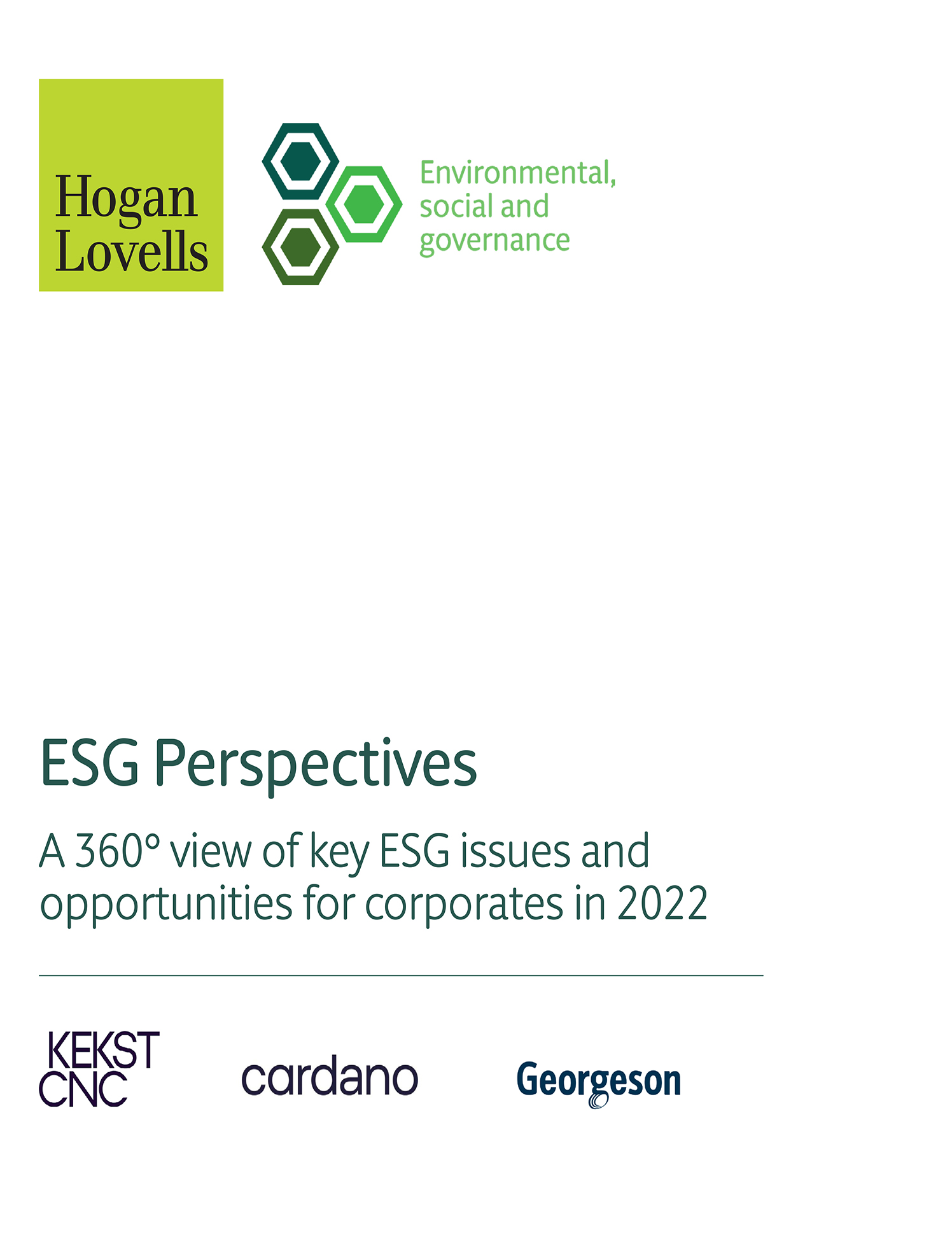First published in Hogan Lovells’ ESG Perspectives Guide
Sustainability has long been viewed as an ambition that belongs far into the future. Action on ESG has tended to be about a gradual shift to a more sustainable future, driven by a slow but steady drip feed of changing regulation and policy. Net zero ambitions have been focused on commitments that will bite 10-30 years from now. Related risks have been viewed as longer term and often hypothetical or sometimes academic in nature.
But the situation in Ukraine has brought these future musings into sharp and immediate relief in a way that no regional flooding or fire has done before. The geo-political implications of our global dependence on oil and gas have been referenced for years as a footnote in the climate transition debate. Seemingly overnight, a safe, equitable, net zero world is no longer a lofty ambition that sits 30 years out. The Ukraine situation has thrust the questions and impacts surrounding ESG into the here and now.
Energy is the immediate issue on the table, but the impacts will quickly flow into other industries and open up new questions on social and governance dimensions. For a low carbon future to be effective, mitigating the social fallout will also need careful consideration. The pedal has been pressed on the climate transition and there is no going back.
But this is not the sole motivating factor for corporates in their backing of Western sanctions and withdrawal from Russia. This is also not a moral judgement, but a clear understanding of the social and governance risks resulting from such a situation.
The question facing businesses right now is not whether ESG is still relevant, but rather how to navigate the immediate implications of this unexpected acceleration. ESG pressure on businesses is coming from multiple angles: changing employee and customer expectations, investor activism, regulatory intervention and with growing frequency, ESG-based litigation.
Now more than ever, the world is watching how businesses act. There are things businesses can and should be doing to mitigate the risks and even capture the significant opportunities that arise. From engaging with regulators to helping investors understand commercial impacts to identifying M&A opportunities, forward planning and clear communication can help businesses thrive though the transition, not just survive it.
Credibility issues arise when there is misalignment in three critical elements of ESG reputation: the expectations of what your business or sector should be doing on ESG, the perception of what your business is doing and the reality your business is in.
It is crucial to understand each of these elements and to bring your stakeholders on a journey to ensure they are as aligned as possible. That requires an up-to-date view of the rapidly changing expectations for different industries, a clear-eyed and objective understanding of how your business is perceived and internal agreement and vision on what your business is actually doing to navigate everything from supply chain impacts to rapidly changing regulation and policy. In a world where the expectations of businesses are rapidly changing, these reputational issues can quickly become financial and operational crises.
By distilling the noise of ESG chatter into these critical elements, businesses can use their communications and engagement to get ahead of scrutiny. The transition to a sustainable future is happening now and businesses must have their responses ready.



